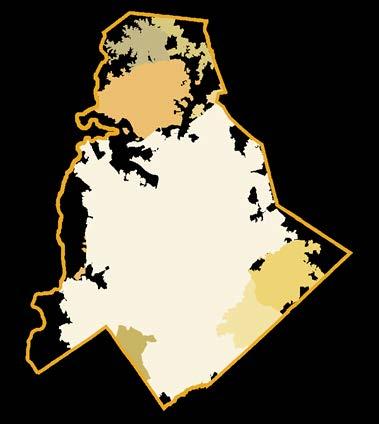
6 minute read
Homefield Advantage
The Department is organized into five parts. One is the administrative unit, which manages the Department. The other is a collection of four divisions, which maximize staff around public interest and need. There are four formal divisions:
Capital Planning Division: responsible for managing capital planning projects and long-term planning.
Advertisement
Community and Recreation Center Services
Division (CRCS): provides physical fitness and wellness programs. Four sections lie under CRCS: • Aquatics: oversees all of Aquatic facilities including neighborhood pools, Ray’s Splash
Planet, Ramsey Creek Beach, and the Aquatic
Centers.
• NC Cooperative Extension: the bridge between
University specialists and Mecklenburg County residents.
• Recreation Centers: hosts, maintains, and organizes wellness and physical fitness programs, after school care, senior services, therapeutic programs and performing arts that occur on site.
• Therapeutic and Inclusive Recreation Services:
develops programs for disabled, elderly, and under-resourced individuals.
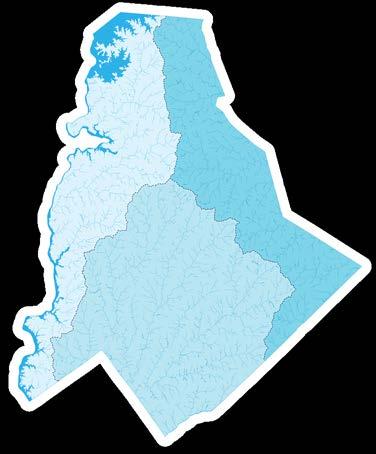
Nature Preserves and Natural Resources Division:
manages the nature centers, nature preserves, and natural heritage sites.
Park Operations Division: operations and maintenance of parks and facilities.
Municipal Boundaries
Mecklenburg County is in the Southwestern region of North Carolina. The South Carolina state line lies directly to the County’s south, while the Catawba River forms the County’s western border. Mecklenburg is home to one city, Charlotte, and six towns, Cornelius, Davidson, Huntersville, Matthews, Mint Hill, and Pineville, as well as the unincorporated areas.
Cornelius
Huntersville Davidson
Charlotte
Pineville
Mint Hill
Matthews
Rapidly Growing Community
Meck Playbook serves as the implementation framework for the Mecklenburg County Comprehensive Park and Recreation Master Plan. Specifically, it serves to guide the direction of capital planning for parks, greenway trails, and recreation facilities. This means planning for growth and managing a large, diverse system that includes about 21,000 acres of parks and open space, 55 miles of greenway trails, and 60 facilities.
Proactive planning is particularly important given the region’s recent and future rapid growth. Since 2010, North Carolina’s population has grown by 7.7%. Charlotte’s growth alone represents 15% of the state’s total growth.
1.6 Mecklenburg County’s municipal boundary includes the city of Charlotte and six neighboring towns.
Upper Catawba Yadkin
Lower Catawba
1.7 The County’s three watersheds provide lifelines for flora, fauna, non-human, and human life.
Mecklenburg’s population in particular grew by 20% (+184,849 people) between 2010 and 20198 and is expected to rise another 17% between 2020 and 2039.9 With such a sustained demand on resources, the Department has recognized a need to anticipate growth. This requires implementing strategies that allow for preservation of natural resources and habitat, expanding access to public open space, increasing investment in public health, and elevating quality of life for future generations. Meck Playbook aims to craft strategies which allow the Department to guide growth, instead of reacting to it. Doing so will create better outcomes and provides services for all.
Embedded in Nature
Mecklenburg County is located in an ecologically diverse and vibrant natural context that gives identity, beauty, and value to the Department’s offerings. It lies within the hilly Appalachian Plateau region along the Charlotte Milton Belt geological zone. It is nestled within the Southern Piedmont Ecoregion, characterized by rolling topography, plains, and small tributaries. The Piedmont region is facing mounting development pressure, as local cities are some of the fastest growing in the country. Amid this pressure, the Department’s broad role in resource conservation and the promotion of a healthy urban ecology is even more critical for the future of cities.
Once the center of a thriving gold mining economy, Mecklenburg’s ‘gold’ is now embedded in the blue and green veins of its natural systems. The County encompasses three watersheds, the Upper Catawba, Lower Catawba, and Yadkin (See Figure 1.7). The Catawba watersheds in particular, are regional lifelines; supplying 2 million people with drinking water and containing a rich biodiversity of fish, birds, insects, and amphibians and other wildlife. Despite this importance, the Catawba River is also one of the region’s most endangered waterways. Responsible stewardship of this land means not only restoring streams, protecting habitats as development increases, and managing invasive species – it also means building a culture of environmental value and future stewardship in the community.
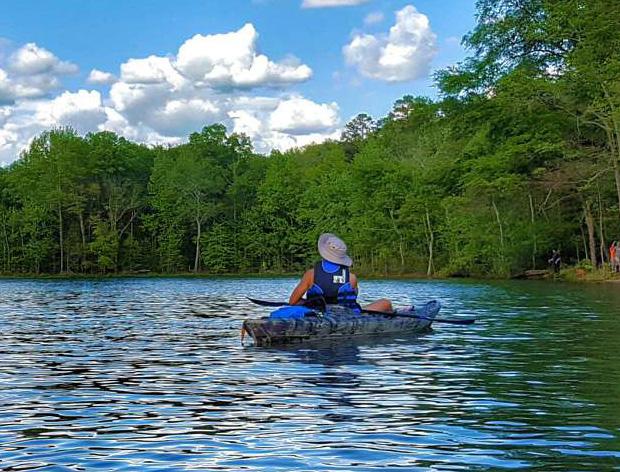
1.8 A kayaker enjoys time on Lake Norman.
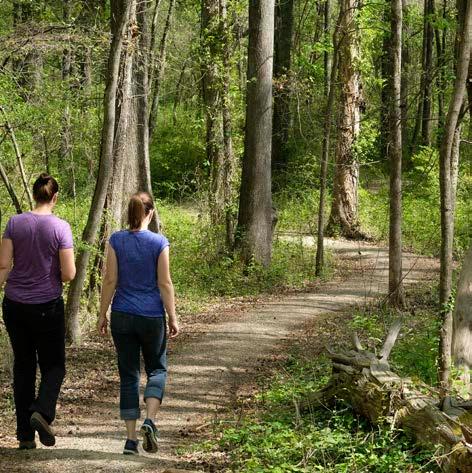
1.9 Evergreen Nature Preserve highlights the ecology of the Southern Piedmont Ecoregion.
Changing Character
Mecklenburg County’s development patterns have driven growth and contributed to its strong, wide-ranging sense of place. The diversity of the County plays out in the scale and characteristics of its streets, the density of its housing, and the variation in its parks. Every element of the Mecklenburg Park & Rec system does not stand alone; it is closely tied to its context and community. By understanding the unique places that make up the County, future parks, trails, natural spaces, and programs can better respond to the unique conditions of different areas of the County. The Charlotte Future 2040 Plan outline place types that align with existing land uses and envision centers for healthy and active communities. Meck Playbook’s character types, show in Figure 1.10 simplify this approach and illustrate physical patterns that exist as a result of the interaction between development and open space. These character types identify values and challenges for future open space investments and identify a few existing parks and open spaces that exemplify each type. Together, these two categorizations can drive future development decisions.
1.10 County character types illustrate how the interplay between development and open space create physical patterns.
Local Hubs: Village and neighborhood centers celebrate local identity and provide safe, walkable connections to shared resources and open space. Development in these areas should maintain connectivity and bolster existing open spaces. Examples include Seversville Park, Kilbourne Park, Midwood Park, Latta Park.
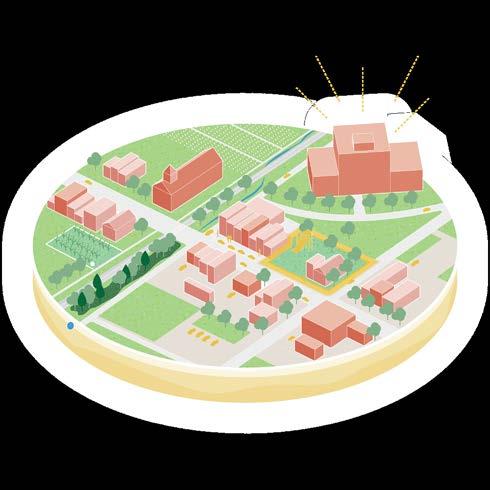

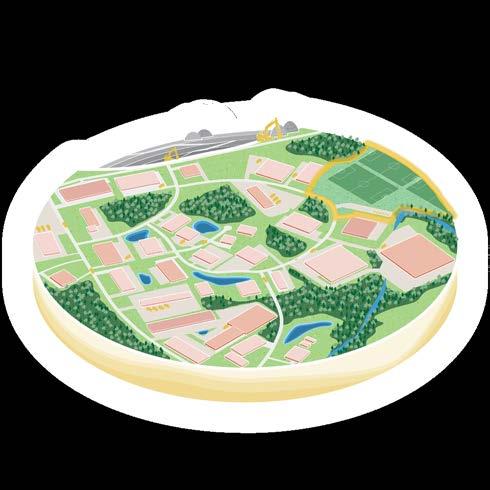
Productive Places: Often on the periphery, large tracts of land are often used for industrial and commercial activity. Lands adjacent to these land uses are ripe for large scale recreation needs like sports fields balanced with wildlife habitat corridors. Examples include Robert C. Bradford Park, Col Francis Beatty Park, T.M. Winget Park.
Regional Destinations: Iconic areas of the region are dense and walkable and serve many. Open space is well-maintained and visited by diverse populations. High land cost restricts new park size and growth, while existing park spaces continue to be maintained and protected as gems within the system. Examples include Romare Bearden Park, Freedom Park, Independence Park.
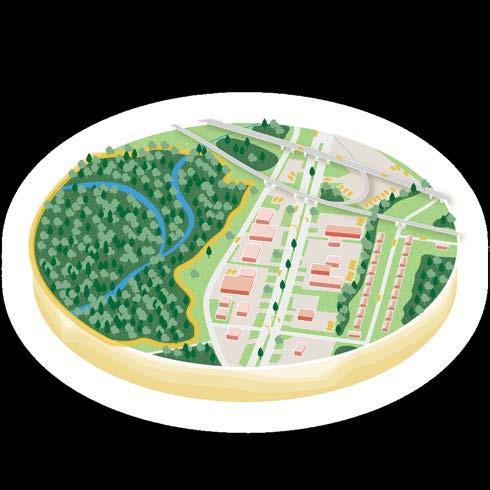
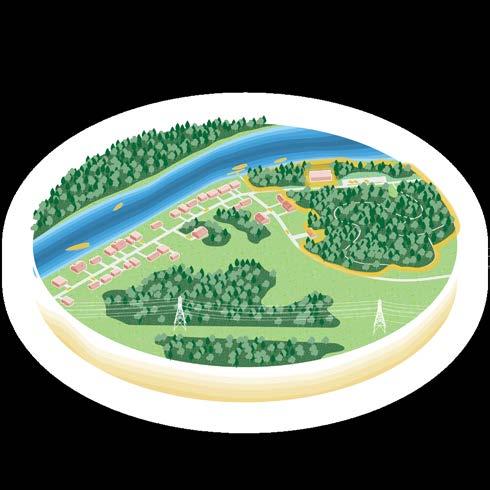
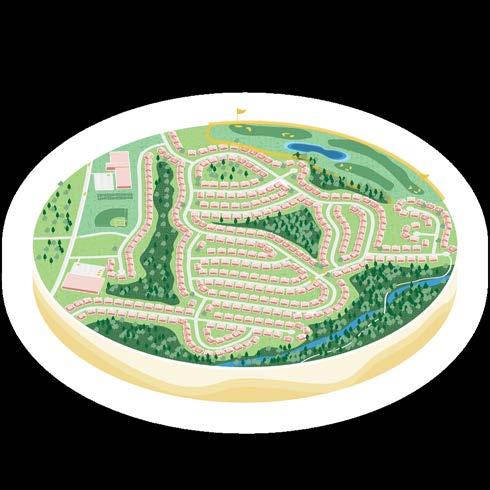
Natural Periphery: Low density residential areas exist at the edges of the County. These zones are defined by natural systems and are the furthest from population centers. Park development in these zones takes advantage of more affordable land and opportunities to preserve the ecological biodiversity that is present along the County’s waterways. Examples include Latta Nature Preserve, McDowell Nature Preserve, Iswa Nature Preserve.
Connected Corridors: The County is bisected and ringed with multiple scales of roadways that provide access throughout the County. Currently, these are connectors of people. However, they could take advantage of residual open space to increase the regional tree canopy coverage and provide micro habitat zones. This land could also support infrastructure for safe links across roadways to connect critical segments of greenways. Examples include McAlpine Creek Park, Martin Luther King, Jr. Park, Renaissance Park.
New Communities: Mecklenburg County has experienced booming growth in the past twenty years. Within new housing developments, public open space is supplemented by household access to private backyards, homeowners’ associations, and private clubs. It is within these new communities that opportunities for shared use of publicly accessible open spaces within neighborhoods could connect to school and park lands. Historically, park space in these communities has been developed along the perimeter of developments, reducing access for all residents. Examples include Clarks Creek Park, Eagles Landing Park, Robbins Park.










